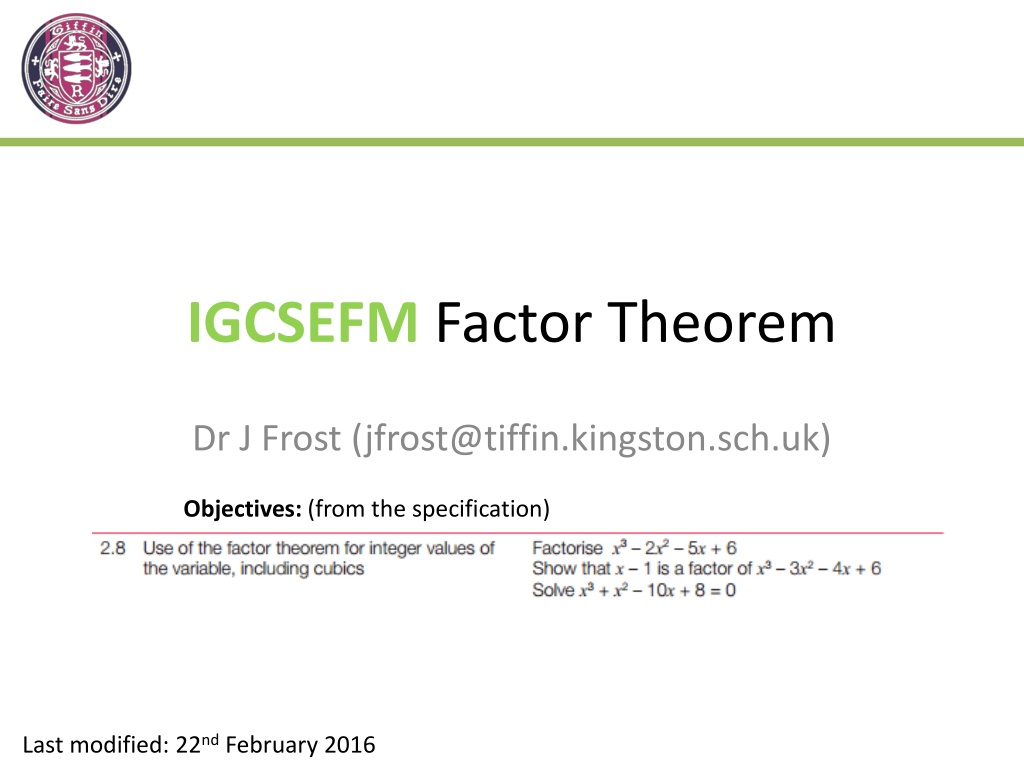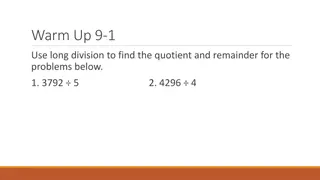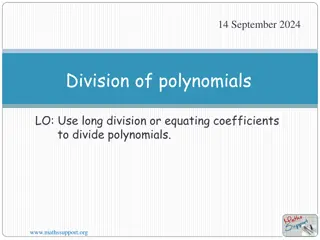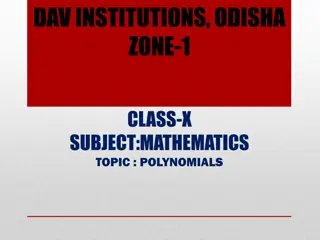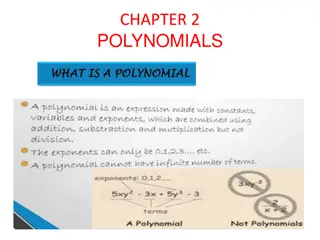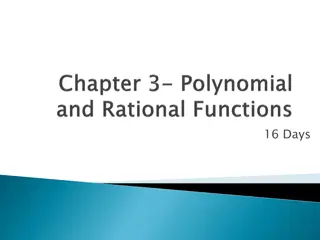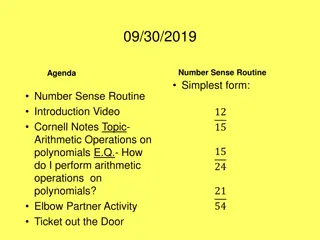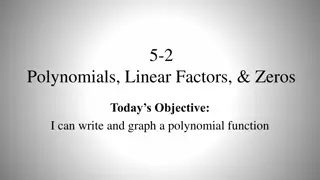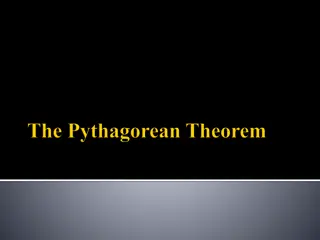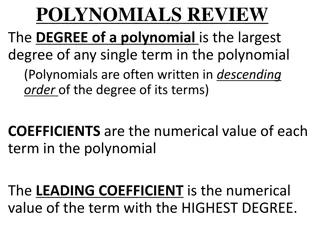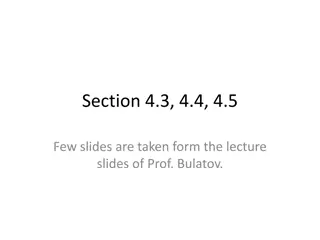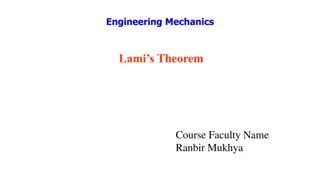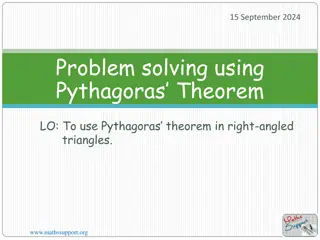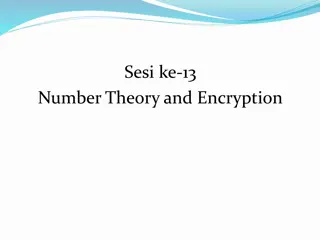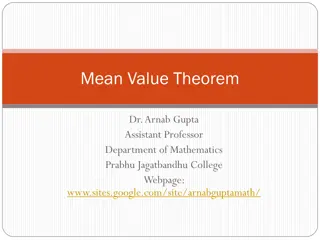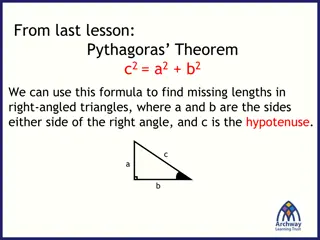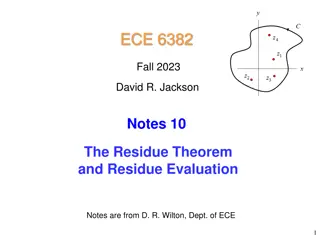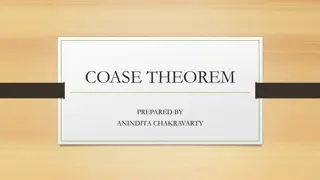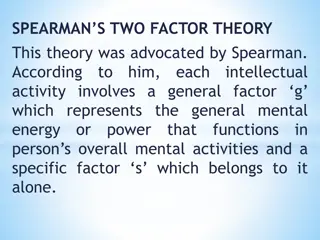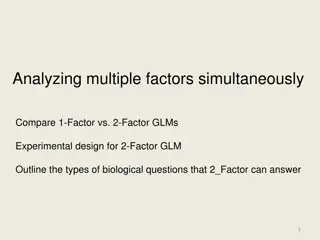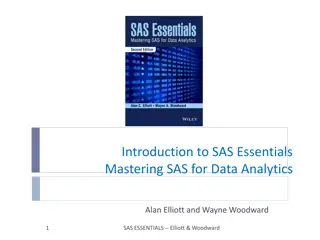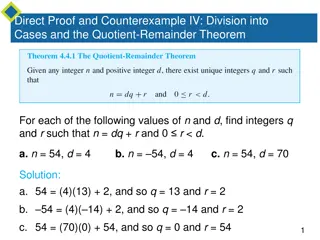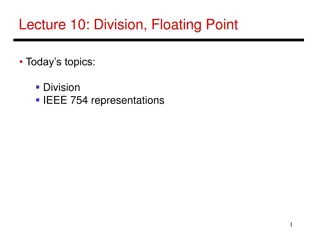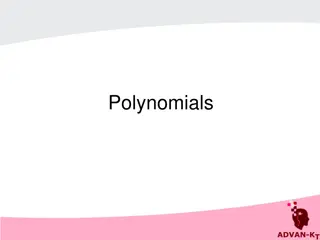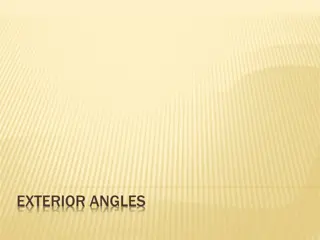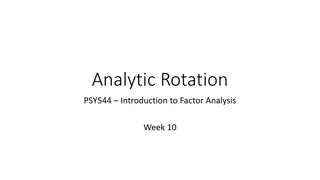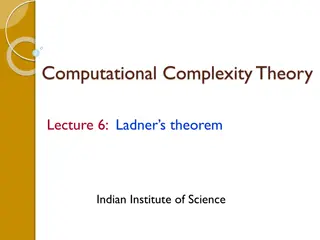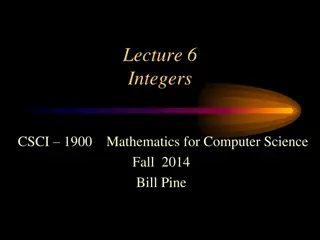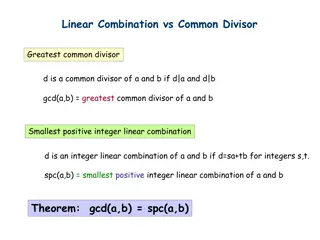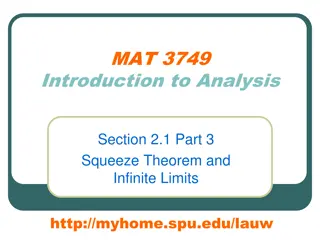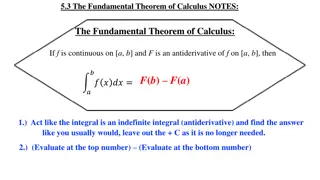Understanding Division of Polynomials using Remainder and Factor Theorem
Explore the concept of dividing polynomials to find remainders and factors, illustrated through examples and explanations. Learn how to apply the Remainder and Factor Theorem to determine remainders, factors, and solve related problems. Test your understanding with practical questions.
Download Presentation

Please find below an Image/Link to download the presentation.
The content on the website is provided AS IS for your information and personal use only. It may not be sold, licensed, or shared on other websites without obtaining consent from the author. Download presentation by click this link. If you encounter any issues during the download, it is possible that the publisher has removed the file from their server.
E N D
Presentation Transcript
IGCSEFM Factor Theorem Dr J Frost (jfrost@tiffin.kingston.sch.uk) Objectives: (from the specification) Last modified: 22nd February 2016
Dividing Polynomials You re used to dividing whole numbers to find a remainder quotient ? remainder ? dividend ? 7 3= 2 +1 3 divisor ? It s actually possible to do it when dividing polynomials too Remainder ?2 Quotient 1 ? 1= ? + Bro Definition: Recall that a polynomial is just an expression of the form ? + ?? + ??2+ ??3+ . Quadratics and cubics are examples of polynomials. ? 1
Remainder and Factor Theorem We re trying to work out the remainder when we divide a polynomial ? ? by ? ? Remainder Quotient ? ? ? ?= ? + ? ? ? Multiplying both sides by ? ?: ? ? = ? ? ? + ? ? Therefore: i.e. We get the remainder when dividing by ? ? by just subbing ? into the original function. ? ? ? = ? What if ? ? = 0? The remainder is 0, thus ? ? must be a factor of ?(?) ?
Remainder and Factor Theorem Remainder Theorem For a polynomial ?(?), the remainder when ?(?) is divided by ? ? is ? ? . Factor Theorem If ? ? = 0, then by above, the remainder is 0. Thus (? ?) is a factor of ? ? . What is the remainder when ?2 3? + 2 is divided by ? 2? ? ? = ?? ? ? + ? = ? (Since no remainder, ? ? must be a factor of ?? ?? + ?) ? What is the remainder when ?3+ 2? is divided by ? + 3? ? ? = ??+ ? ? = ?? ?
Examples Remainder when ?2+ 1 is divided by ? 2? ? 2 = 5 Remainder when ?3 ? is divided by ? + 1? ? 1 = 0 Remainder when ?2+ 1 is divided by 2? 1? 1 2 Remainder when ?2 ? is divided by 3? + 4? ? 4 ? ? =5 Bro Hint: What value of ? makes the thing we re dividing by 0? ? ? 4 =28 ? 3 9
Test Your Understanding So Far Find the remainder when ?2+ ? is divided by ? 2. ? ? = ??+ ? = ? 1 ? Find the remainder when ?2 5? + 3 is divided by ? + 1. ? ? = ?? ? ? + ? = ? 2 ? Find the remainder when 2?3 ?2 is divided by 2? + 1. ? ? ? ? 3 ? ? = ? ? ? = ? ? ? ?
Further Examples Show that ? 2 is a factor of ?3+ ?2 4? 4 ? ? = ? + ? ? ? = ? ? Set 2 Paper 1 Q14 ? ? = ?? ? ??+ ?? ?? = ? ?? ?? = ? ? = ? ?
Test Your Understanding Jan 2012 Paper 2 Q16a ? ? = ?? ?? + ?? = ? ? ? = ?? ?? ? + ?? = ? ? Jan 2013 Paper 2 Q22 ? ? = ? + ?? + ?? + ?? = ? ? ? = ?? + ?? ?? + ?? = ? ? = ?, ? = ?? ?? + ? = ?? ?? ? = ? ?
Exercise 1 Find the remainder when the polynomials are divided by the linear function, and write factor if a factor. ?3 8? + 7 ?3 7?2 5? + 1 ?3+ ?2 4? 5 ?3 6?2+ 10? 4 ?3+ 27 ?3 ??2+ ?2? ?3 ? 1 and ? + 2 are factors of ??3 2?2 5? + ?. Determine the values of ? and ?. ? = ?,? = ? ? 5 1 ? ? ? ? ? ? a b c d e f ? 1 ? (??????) ? + 1 ? ? + 2 ? 2 ?? ? + 3 ? (??????) ? ? ? (??????) (? + 3) and ? + 2 are factors of ?3+ ??2+ ? + ?. Determine ? and ?. ? = ?,? = ? ? ? 6 [June 2013 Paper 2 Q21] (? ?) is a factor of 2?3 7?? + 3?. Work out the largest possible value of ?. ? ? = ??? ???+ ?? = ? ? ??? ?? + ? = ? ? ?? ? ? ? = ? Largest value is 3. 7 Show that ? 2 is a factor of ?3 4? ? ? = ?? ? ? = ? 2 ? ? ? = ?3+ 2?2+ ?? 76 ? 4 is a factor of ?(?). Work out the value of ?. ?? + ?? = ? ? = ? ? 3 ?2 4 is a factor of ?3+ ??2+ ?? 20. Find the values of ? and ?. Note that ?? ? = ? + ? ? ? so ? ? = ? and ? ? = ?. ? = ?,? = ? ? ? ? = ?3+ ??2 2? + 3 (? 1) is a factor of ? ? . Determine the value of ?. ? ? = ? ? 4 ? ? = ?
Fully Factorising Fully factorise ?3+ 6?2+ 5? 12 What s a dumb but moderately effective way of finding the factors? If ? ? = ??+ ???+ ?? ??, then say try ? ? ,? ? ,? ? ,? ? ,? ? ,?( ?) and see where the remainder is 0. ? ? ? = ? so ? ? is a factor. ? ? = ? so ? + ? is a factor. ? ? = ? so ? + ? is a factor. ? ??+ ???+ ?? ?? = ? ? ? + ? ? + ? But we had to try a lot of values. Is there a better way?
Normal Long Division 8 . 3 4 2 3 . 0 0 0 0 3 3 9 3 8 8 5 0 11 1. We found how many whole number of times (i.e. the quotient) the divisor went into the dividend. 2. We multiplied the quotient by the dividend. 3. in order to find the remainder. 4. Find we brought down the next number.
?2 +7? +12 ? 1 ?3+ 6?2+ 5? 12 ?3 ?2 7?2+ 5? 7?2 7? the ? we divided by so we can find remainder. Bring down extra term. Divide just the first terms, i.e. ?3 by ?2. And repeat! Multiply whole times it went in by 12? 12 12? 12 The Anti-Idiot Test: You should get a remainder of 0 at the end if you know it s supposed to divide exactly. 0
Finishing off the question Fully factorise ?3+ 6?2+ 5? 12 ?2+7? +12 ? 1 ?3+ 6?2+ 5? 12 ?3+ 6?2+ 5? 12 = ? 1 ?2+ 7? + 12 = ? 1 ? + 3 ? + 4 ? ?
Quicker Way Fully factorise ?3+ 6?2+ 5? 12 We established ? 1 was a factor. We can immediately tell two of the terms of the other bracket (think about the expansion) (? 1)(?2 + ?? + 12) ? ? We then know that the two brackets this larger bracket factorises to must end with two numbers that multiply to give 12. (? + 3) and (? + 4) sounds like a sensible guess, so we then could try ?( 3) and ?( 4) to see if we were right.
Another Example Fully factorise ?3 2?2 5? + 6 Try to find an initial factor by using the factor theorem. ? ? = ? ? ? + ? = ? Therefore ? ? is a factor. ? Then: ?3 2?2 5? + 6 = ? 1 ?2 ? 6 = ? 1 ? + 2 ? 3 Then divide by this factor you found. ? ? ?2 ? ? 6 ? ? ? 1 ?3 2?2 5? + 6 ?3 ?2 ?2 5? ?2 + ? ? ? ? 6? + 6 6? + 6 ? ?
Test Your Understanding Fully factorise ?3 3?2 4? + 12 Recap: 1. Try ? for a few values to establish an initial factor. 2. Do long division by your factor to find the remaining expression. 3. Factorise (by normal quadratic factorisation) this expression you get. = ? + 2 ? 2 ? 3 ? If you finish quickly: Solve ?3+ 3?2 6? 8 = 0 ? + 1 ? + 4 ? 2 = 0 ? = 1 ?? 4 ?? 2 ?
Exercises Factorise the following: ?3 6?2+ 11? 6 ?3+ 2?2 ? 2 ?3+ 7?2+ 14? + 8 ?3 3?2 10? + 24 = ? + ? ? ? ? ? ?3+ 2?2 13? + 10 = ? + ? ? ? ? ? e 1 ? ? ? ? ? = ? ? ? ? ? ? = ? + ? ? + ? ? ? = ? + ? ? + ? ? + ? a b c d Solve the following: ?3 ?2 4? + 4 = 0 ?3 ?2 14? + 24 = 0 ? = ?,?,? ?3+ 5?2+ 6? = 0 c 2 ? ? ? ? = ?,?,? a b ? = ?, ?, ?
